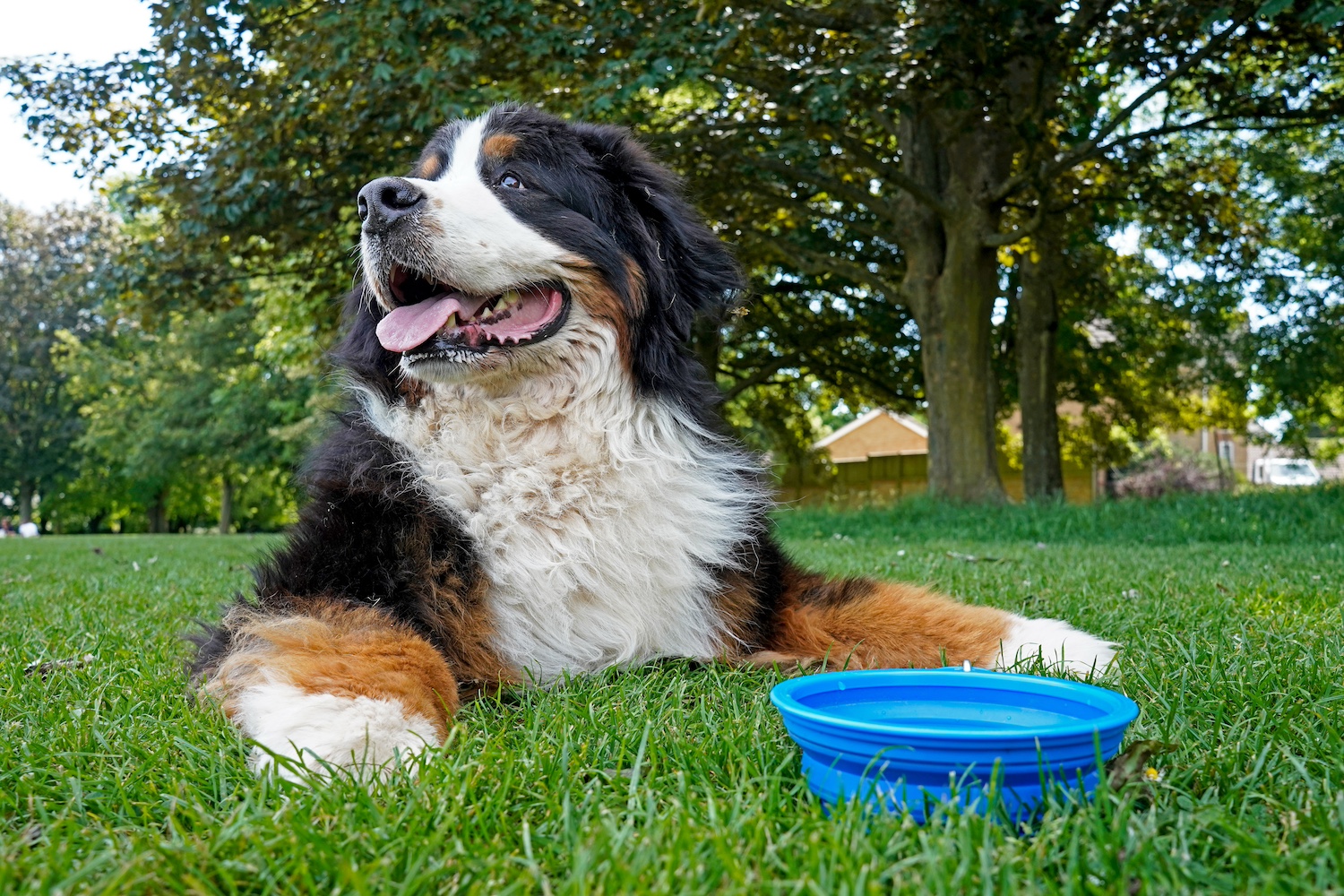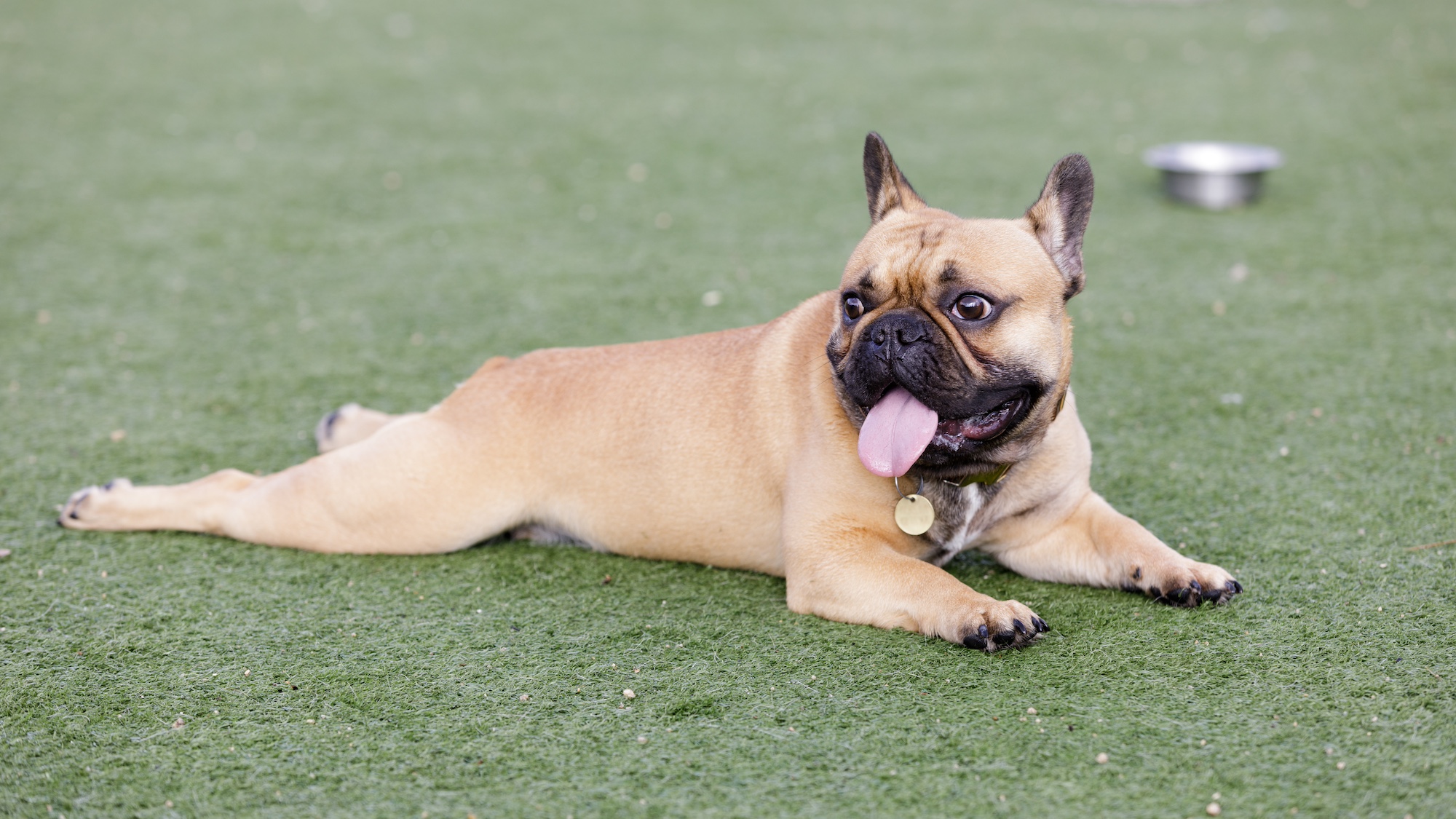It’s one of the classic dog poses: breathing with their mouth open and their tongue hanging out. This is panting.
Every dog pants from time to time—for example, after exercise or when something exciting just happened—but sometimes it can be a sign of a medical concern. Here’s how to tell whether your dog’s panting is normal or requires immediate veterinary intervention.
Panting: the basics
Dogs do have some sweat glands, but can’t cool off by sweating the way people can. Instead, they mainly keep cool by panting. Panting dogs release warmer air from inside of their bodies and take in cooler air from the outside. That’s one reason that it’s dangerous for dogs to exercise when it’s too hot outside—there’s no cool air available to help them get back to a healthy temperature.

Make sure your dog has enough water to drink.
Reasons dogs pant
They’re exercising: If your dog just sprinted, wrestled, played tug, or had a vigorous fetch session, they might pant for a while. This is not a cause for concern on its own; just make sure they have a chance to rest and drink some water. If your dog’s breathing doesn’t return to normal with rest and hydration, call their vet right away. Every dog is different, but as a general rule it’s concerning if a dog who’s resting and hydrating doesn’t stop panting within ten minutes.
They’re stressed: Dogs can react to physically or psychologically stressful situations by panting. If someone or something is bothering your dog and causing them to pant or show other signs of stress, let them walk away and have some time to themselves.
They’re in pain: Just like the above types of stress, pain can cause a dog to pant. Dogs feeling pain may also show other signs that they’re distressed, like shaking or yelping.
It’s hot out: Because dogs pant to regulate their body temperature, they’re more likely to do so in hot weather. If your dog is panting when it’s warm out, get them to a cooler place and give them water. If this doesn’t stop their panting, call a vet immediately.
They have heatstroke: Heatstroke is obviously related to the high temperatures we mentioned above. But we’re calling the condition out separately, because it’s a medical emergency. Aside from heavy or frantic panting, dogs with heatstroke may have diarrhea, seem confused, drool, vomit, or collapse, among other signs. This happens because the dog’s body temperature gets dangerously high. If you don’t get your dog veterinary attention right away, heatstroke can permanently damage their organs or even kill them—so you need to take it seriously.
To prevent heatstroke, keep your dog indoors, with air conditioning, on hot days (consult your vet about what temperature range is appropriate for your pup). Don’t let your dog exercise strenuously on days when it’s too warm for them to do so safely, and never leave them alone in a car. Even when you don’t think it’s hot outside, cars can trap heat and become unsafe very quickly.
They’re reacting to a poison or an allergen: Panting can be part of a dog’s reaction to a substance that doesn’t belong in their body. If you suspect that your dog may have ingested something hazardous, promptly call your vet or animal poison control.
They have a heart or lung problem: Panting is among the signs you might see in a dog who has issues with either of these organs. If your dog is panting more than they used to, or at times when they didn’t before, check with their vet to make sure that nothing is wrong.
They’re excited: Just like you might breathe harder when you’re surprised or delighted, a dog might pant for a little while when something exciting takes place. If this is the reason for a dog’s panting, it should only last a short time.

Be extra careful with flat-faced dogs—hot weather and excessive exercise are especially dangerous for them.
A word on gum color
Because panting is heavy breathing, and gums can offer clues about whether dogs have enough oxygen, the gums are one place you can look as you try to figure out how your panting dog is doing. Normal gums are usually bubble-gum pink, with some breed exceptions. Among the colors that are concerning are white, pale pink, blue, and purple. We have a full guide to dogs’ gum colors here.
Some breeds pant more than others
Brachycephalic dogs—those with flat faces—are more prone to panting because it’s harder for them to breathe. Because of this, their people should be vigilant about keeping them away from hot environments and avoiding excessive exercise. If you’re not certain how much activity is appropriate for your dog, ask your vet.
When in doubt, call your vet
The above information can be a lot to process, but your veterinarian is there to help. If your dog’s panting seems unusual to you, it can’t hurt to contact a professional and get their opinion so that you and your dog can breathe easier.









